Gaps under your shed detract from the appearance of your garden. The exterior of the shed's bottom should have some material placed around it as a preventive measure. If you are concerned about filling the substantial space between the shed's base and the ground, you've come to the right place. We've researched this topic and have found the best answers to this question.
Filling the gap under your shed will prevent insects and animals from coming in and destroying your equipment and surfaces. Here's how to fill the gap under your shed:
1. Choose the correct material
2. Get the measurements
3. Cut the panels
4. Place the panels
5. Attach the right-angle bracket
6. Screw the panels in
7. Seal the remaining gap
The task will be effortless and effective with the right equipment, materials, and careful planning. We will discuss the importance of filling a gap under your shed, the material to be used, and the steps in filling up the gap. Continue reading to see what you can place around the base of your shed.

Importance Of Filling A Gap Under Your Shed
The open space under your shed allows pest and animal infestation and also exposes your shed to moisture damage. Mice, gophers, and squirrels are just a few of the rodents that can enter your shed and do permanent harm.
They might gnaw through the cables on your lawn equipment, make holes in your walls, and deposit their excrement in the shed.
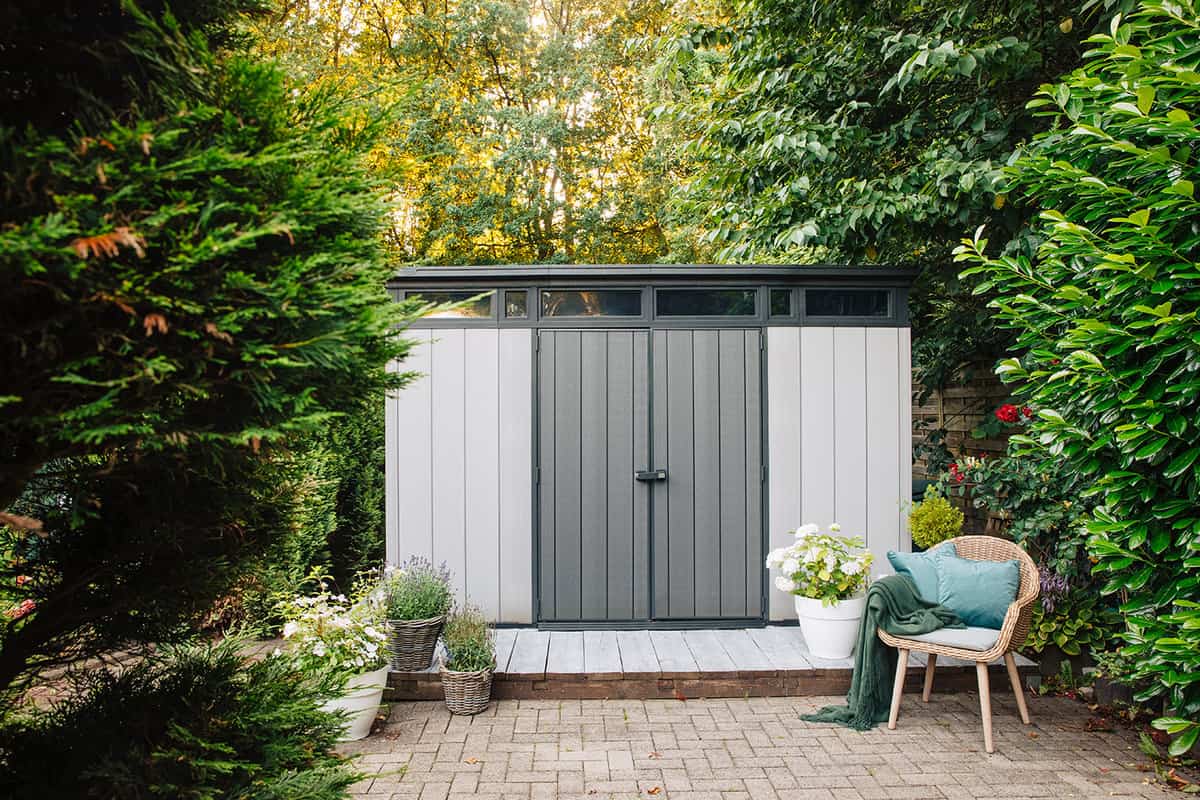
You can fill that gap with shed skirting to give your shed a finished appearance and keep pests out. Shed skirting is when you install a material around the base of the shed to prevent unwanted animals from getting inside.
It will cover the ground, the shed crawl space, and the area between the shed floor. Additionally, it's put in place under sheds to ensure airflow and stop mold growth.
Your shed needs to have sufficient air circulation throughout because it might have dampness that can lead to the rotting of your wood. Filling the gap will also lengthen the shed's longevity.
It's essential to consider various elements when determining which shed skirting is best for your home, including price, benefits and drawbacks, types, and ideal locations for installation. Shed skirting can improve the appearance of a shed and keep animals out of the area beneath it, but it can also lead to issues.
If the area under the shed is enclosed, air moisture may be trapped there, eventually promoting mold formation and mildew. If you live in a humid area, you should choose shed skirting such as lattice that allows for airflow.
What Should I Put Around My Shed?
If you decide to install shed skirting, you should leave no openings that animals could use to get inside. This is mainly dependent on the type of material you put around the shed.
The most reliable and stable method of filling gaps is to use concrete blocks. Duraskirt panel is a concrete block skirting material you can count on for strength and durability.
Remember that a concrete block skirt will prevent airflow, which could lead to the accumulation of moisture in the area beneath your shed. Also, it can survive severe weather and last many years without frequent maintenance and replacement.
You should examine the lifespan of various shed skirting materials when selecting one, especially when considering the shed skirting's overall cost. Fortunately, concrete blocks have a long lifespan compared to other materials. Others may deteriorate and need to be repaired or replaced.
Concrete landscaping blocks are typically more expensive compared to other options and must be installed with extreme precision. Before installing, you must cut the blocks to the appropriate length using a diamond-tipped circular saw blade.
Filling A Gap Under Your Shed
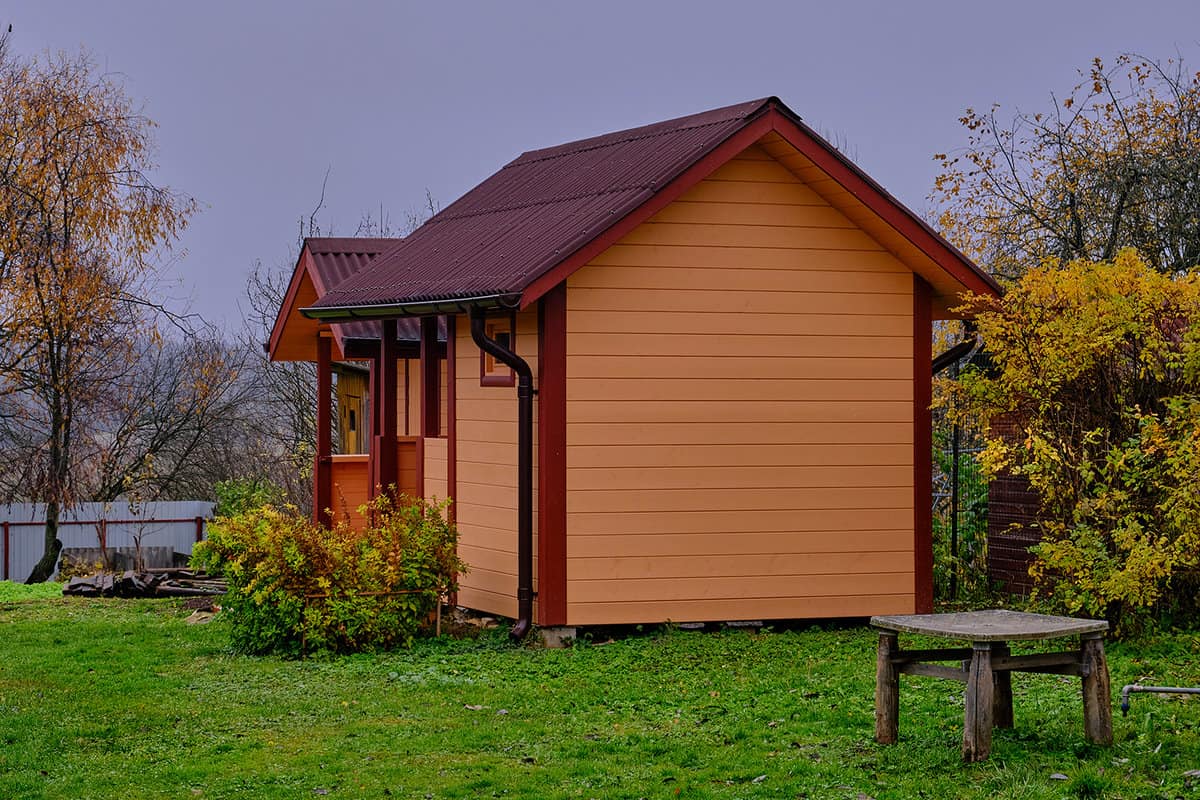
Many people encircle the external bottom of their shed with anything. But you should find the right technique and the suitable materials to prevent the animals from entering your shed and keep the equipment you store in good condition.
These skirting boards require little upkeep while providing excellent protection. See them in action here and continue reading for further instructions.
1. Choose the Correct Material
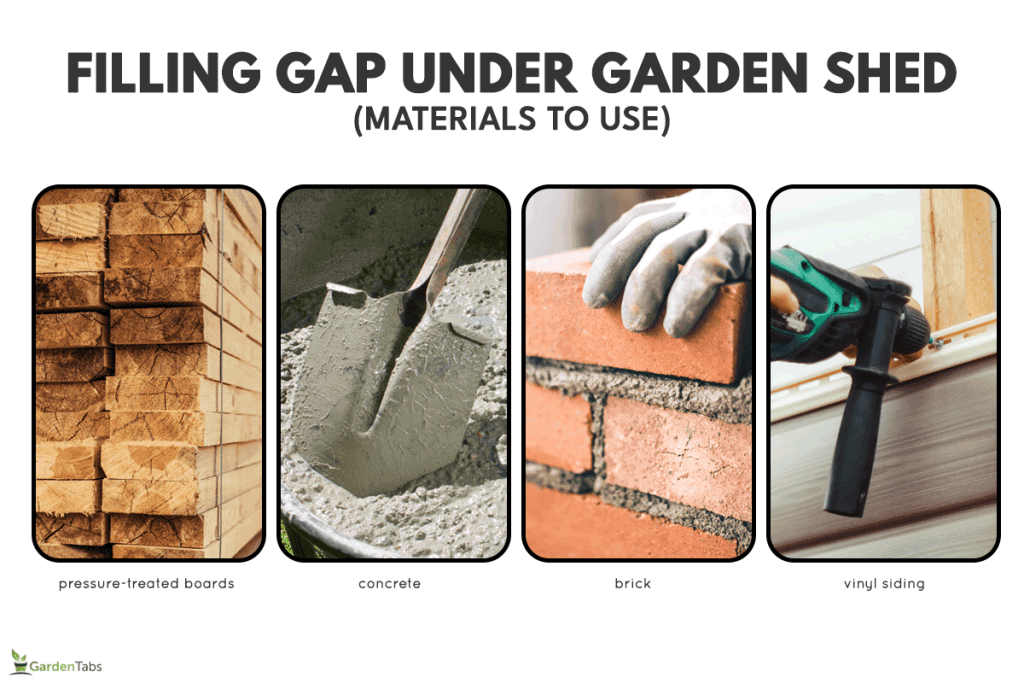
Numerous materials with various styles are available for filling the gap, including vinyl siding, brick, concrete, and pressure-treated boards.
Choosing a material that best meets your needs and preferences is vital because different materials have different levels of durability. Concrete is generally the best choice for filling a gap under your shed.
Duraskirt concrete blocks or landscaping blocks can span the gap and provide a dependable, sturdy solution. The concrete boards are robust, long-lasting, and precisely cut to fit the gaps under your shed. Concrete blocks won't rot or degrade over time since animals can't eat through them.
2. Get the Measurements
Measure the outer lineal footage and required panel height before cutting the panels.
3. Cut the Panels
Using a circular saw makes cutting the panels simple. The installation can require additional work because you may need to cut some blocks to fit the gap if no precisely sized blocks are available.
Click here to see this electric circular saw on Amazon.
4. Place the Panels
Install the concrete panels in their appropriate positions. Typically, this involves the careful positioning of the material.
5. Attach the Right-angle Bracket
Place the right-angle bracket at the top of the panels. This bracket will help hold the panels together and keep the gap between the shed and the ground tighter.
Click here to see this right-angle bracket on Amazon.
6. Screw The Panels In
Carefully screw the panels with an electric screwdriver.
Click here to see this electric screwdriver on Amazon.
7. Seal the remaining gap
Look for any openings and close them with caulk. Run the caulk along the gaps between panels. You can install concrete beneath the shed floor with confidence that it will last.
Click here to see this concrete sealant on Amazon.
Does My Shed Base Need To Be Perfectly Level?
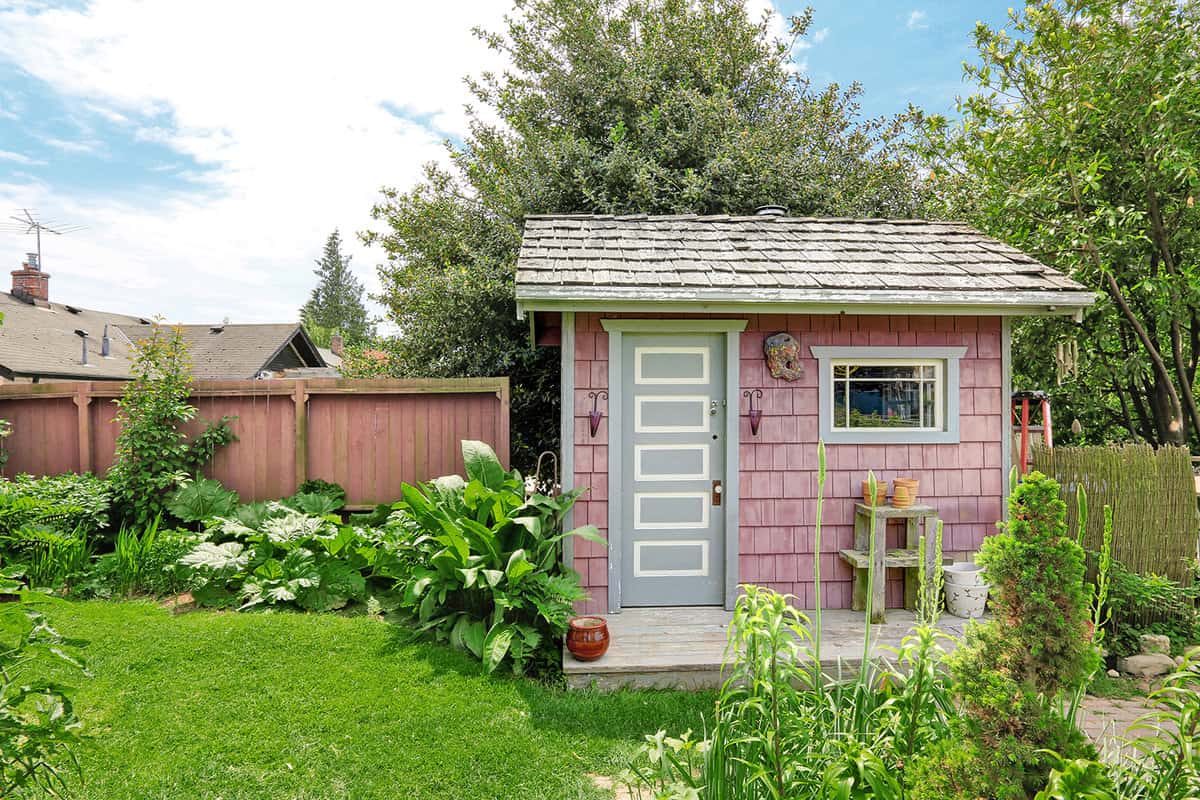
A shed base should be level to provide a secure foundation. A level shed will ensure that it is securely situated in the ground. The shed will become unstable and more prone to collapse without a proper level basis.
Using a foundation of concrete blocks is the most straightforward approach to building shed bases on uneven ground. This helps you to easily control the number of blocks to create a level base while compensating for higher or lower ground on one side.
Get some landscaping fabric and lay it flat on the ground beneath the shed to level the base of the ground for the shed. Simply place the jack between the skids to touch a floor joist, then begin pumping. Then, add gravel between your skids and joists.
Without leveling the ground beneath your shed, it won't last very long, and you don't want all of your challenging efforts to be in vain because of a decision you could have avoided.
Can I Put My Shed On The Grass?
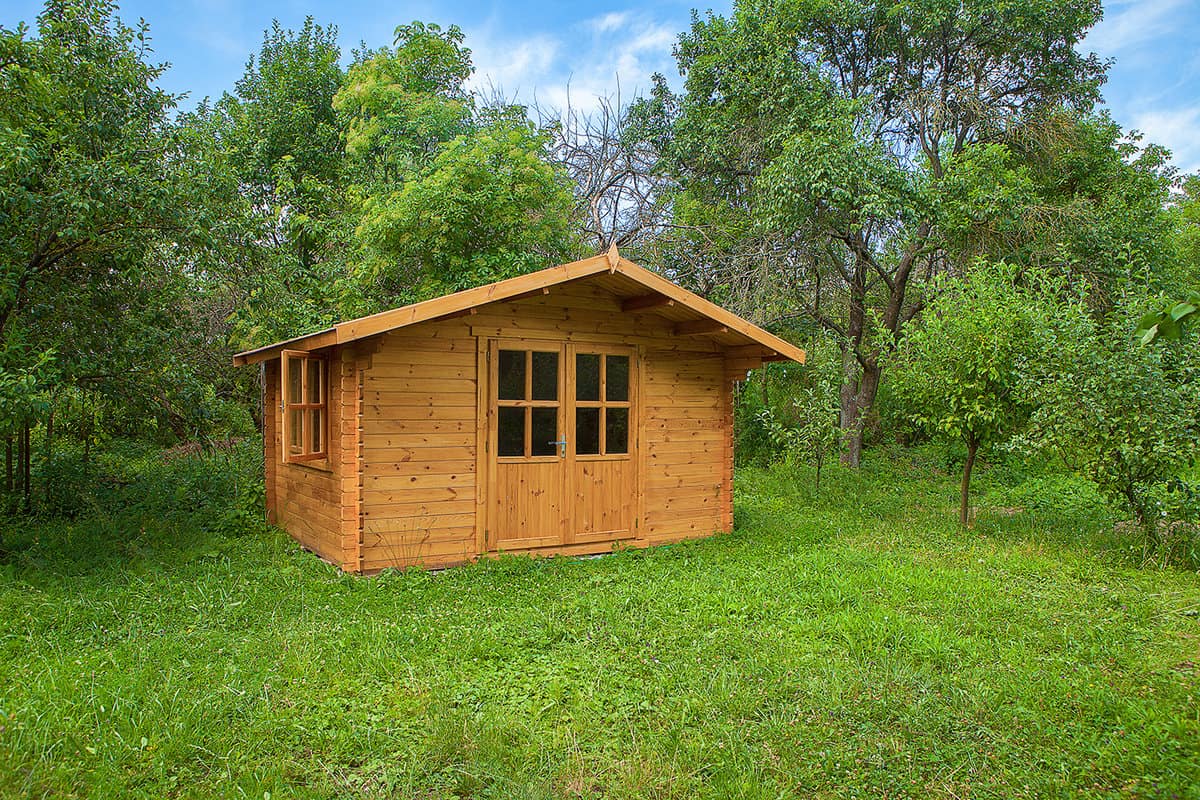
A shed's base serves as its foundation, supporting it for many years. As a shed ages and deteriorates, an inadequate base could cause problems.
You shouldn't build your new shed on grass or your lawn. The installation of a shed on a grass lawn presents several difficulties. It may cause moisture damage in addition to subsidence, warping, corrosion, and rot.
It is possible to level grass, but if the shed's weight is applied to the top, the grass will likely become uneven. This could harm the shed and make the doors and windows difficult to open and close.
The best foundation for large, heavy structures is concrete. A stable foundation minimizes movement and subsidence over time, which can strain the structural integrity of the shed's walls.
In Closing
Filling the gap under your shed is not that challenging. Adding shed skirting to your shed is an excellent method for increasing its lifespan and keeping pests out. To extend the lifespan of your shed, you should adhere to a detailed maintenance schedule incorporating preventative measures.
Many materials are available if you want to skirt your shed; some of the most popular ones are lattice, bricks, and concrete blocks.
Any material you choose will prevent pests from entering while maintaining the quality of your shed. Just remember to perform routine maintenance and ensure your shed has adequate airflow for maximum results.
Before you go, we have these other posts that you may be interested in:




